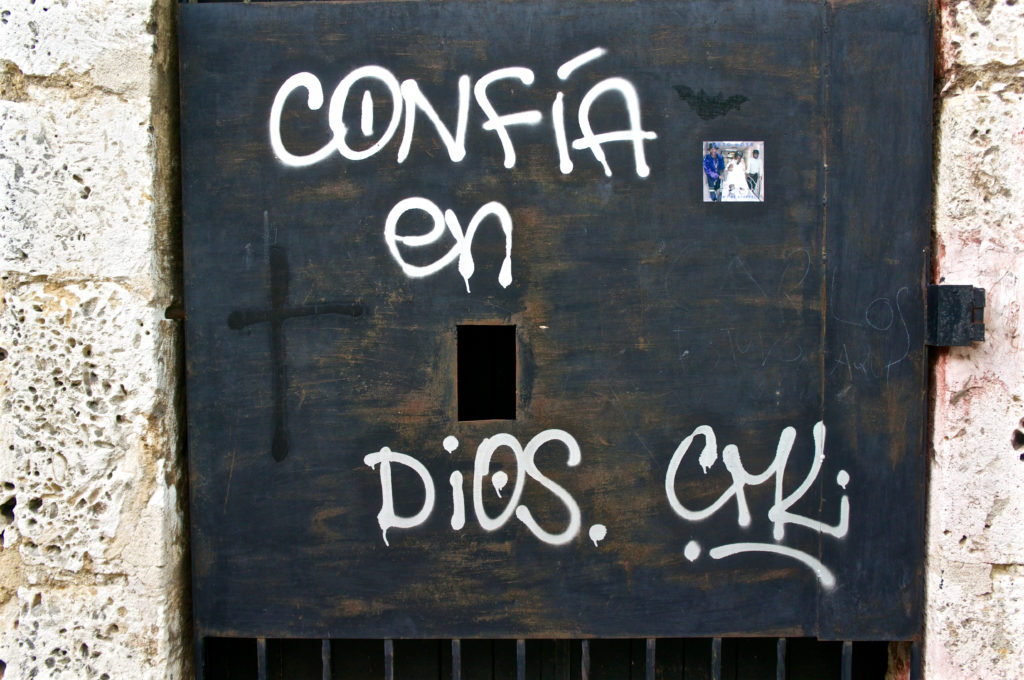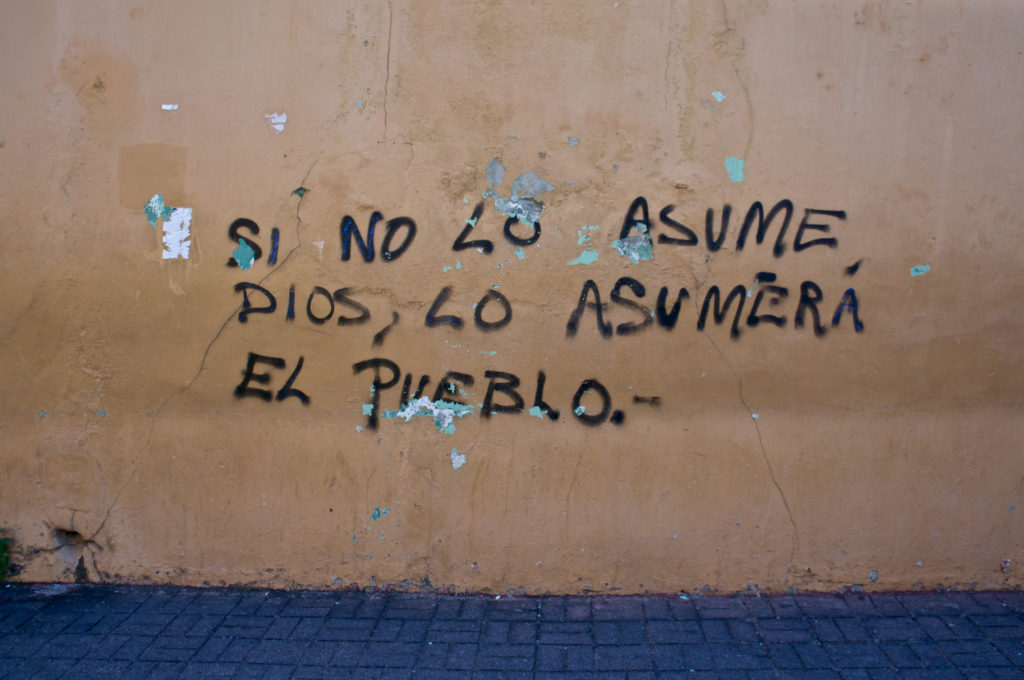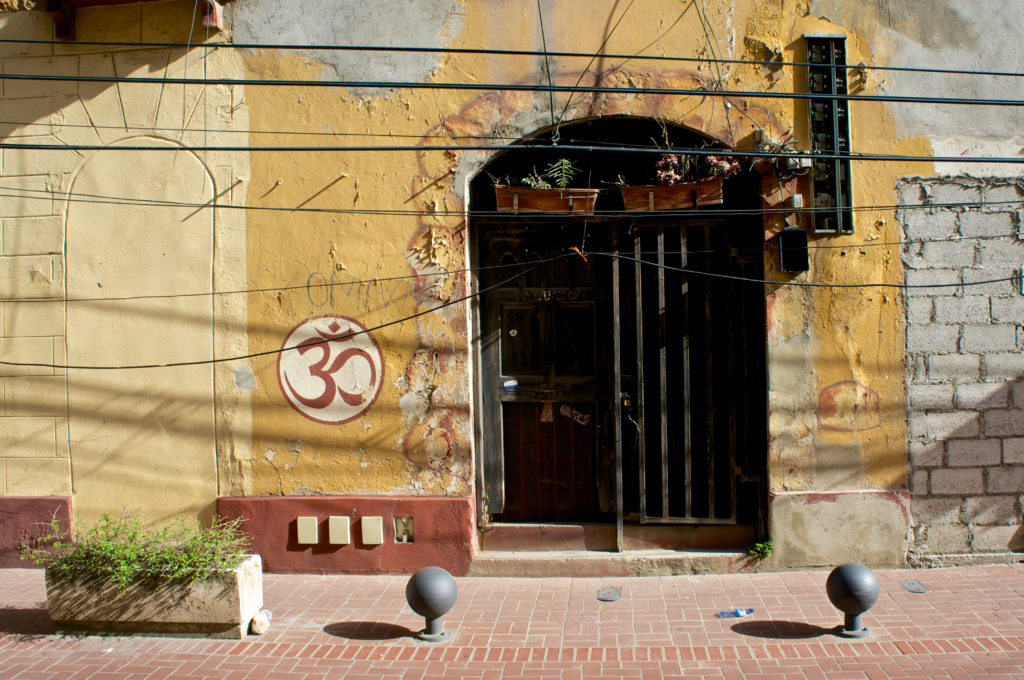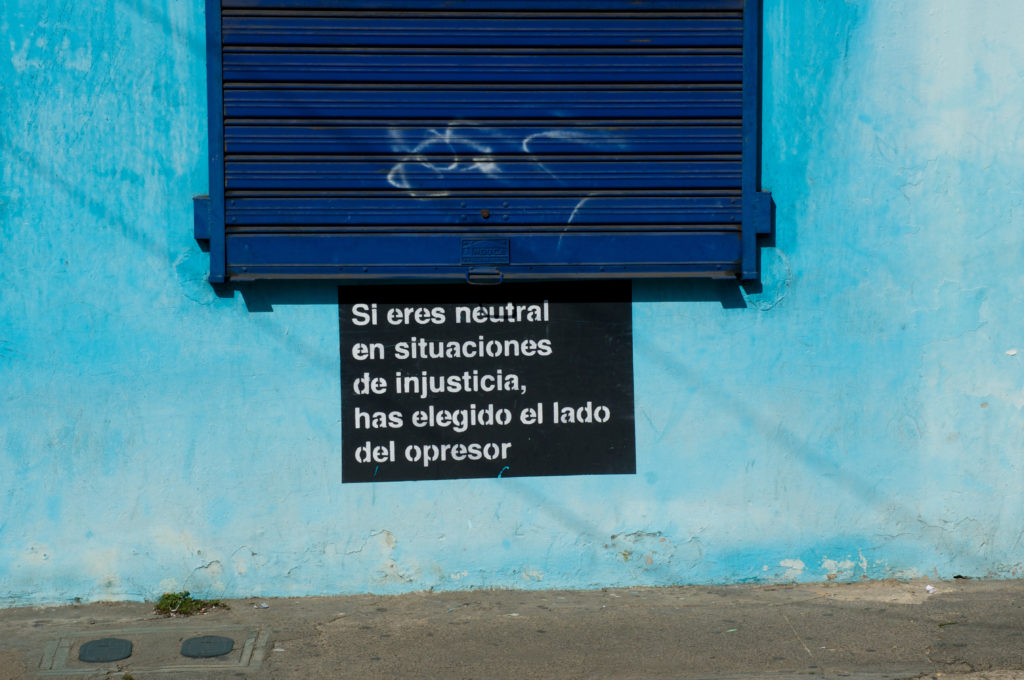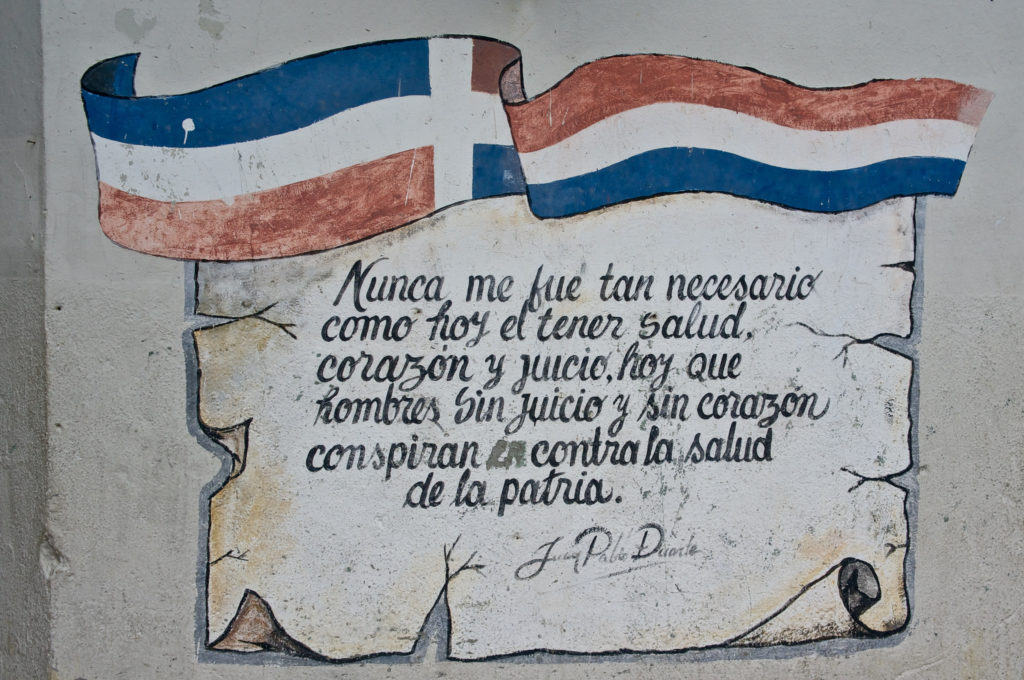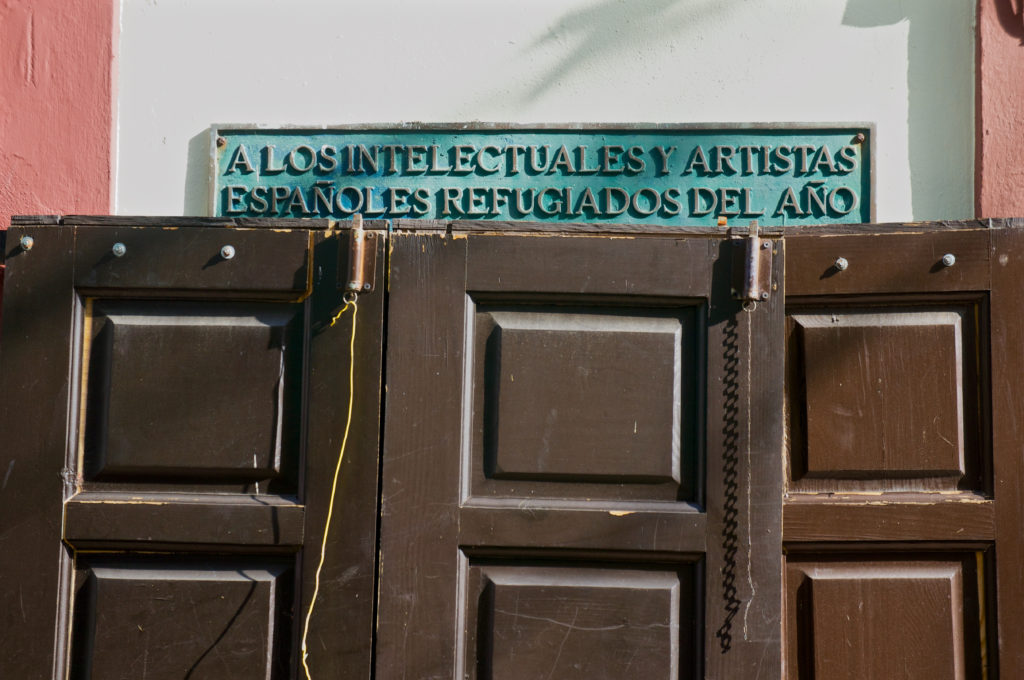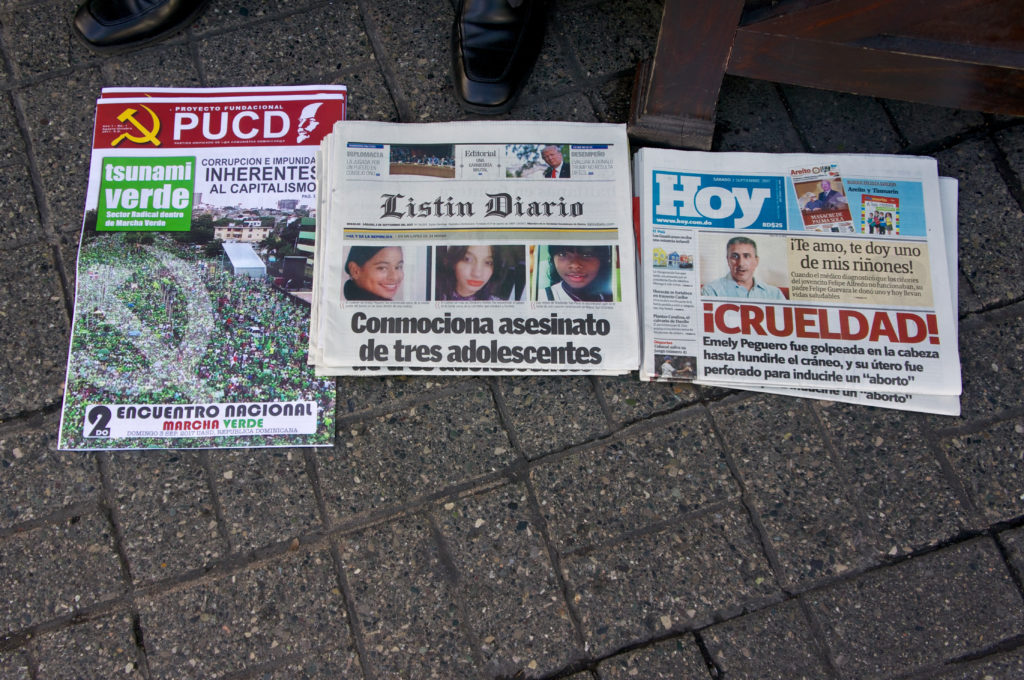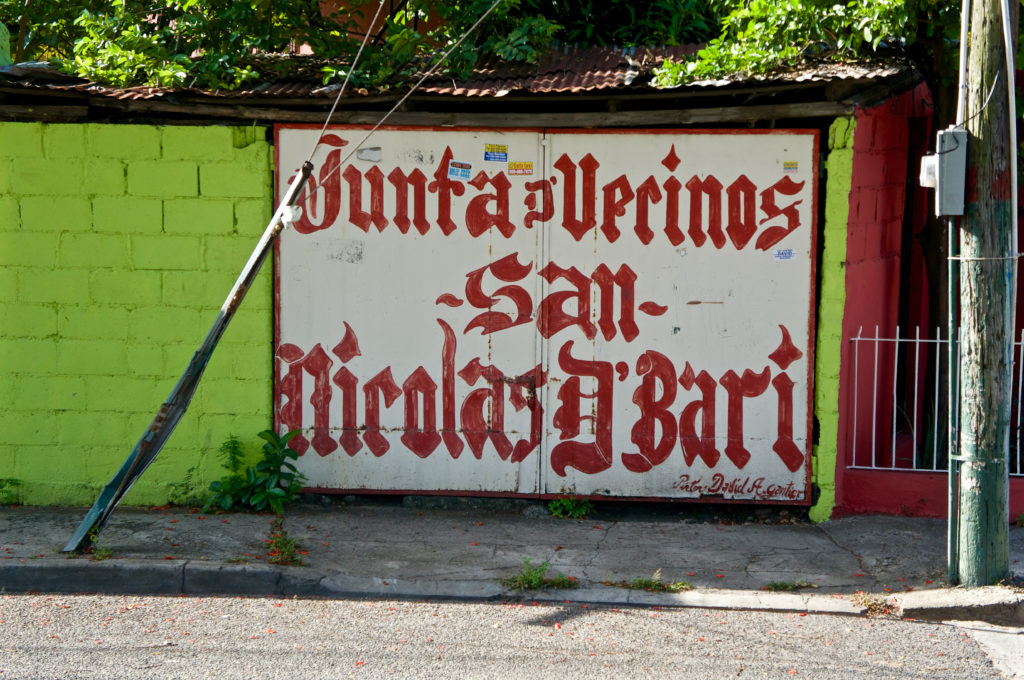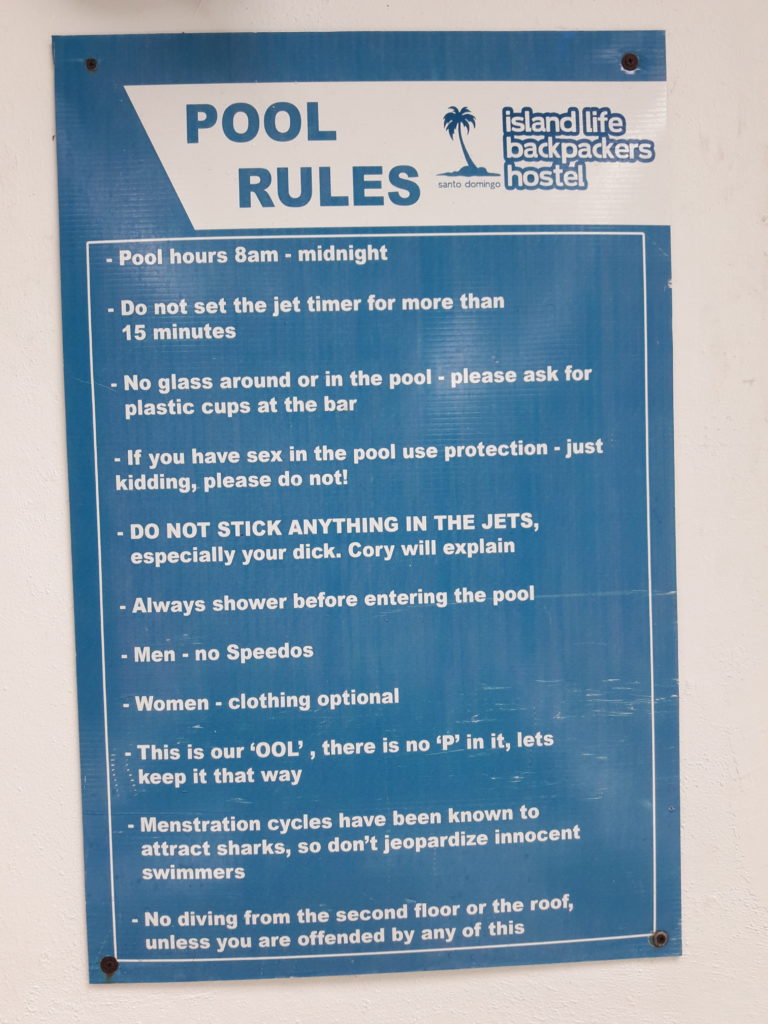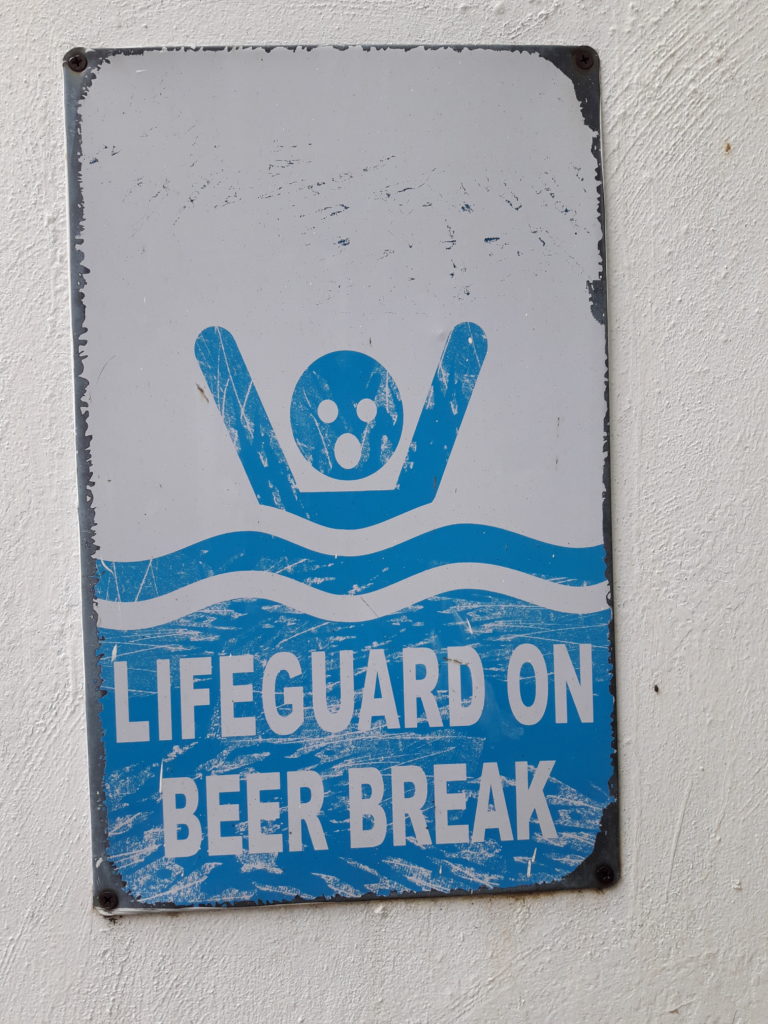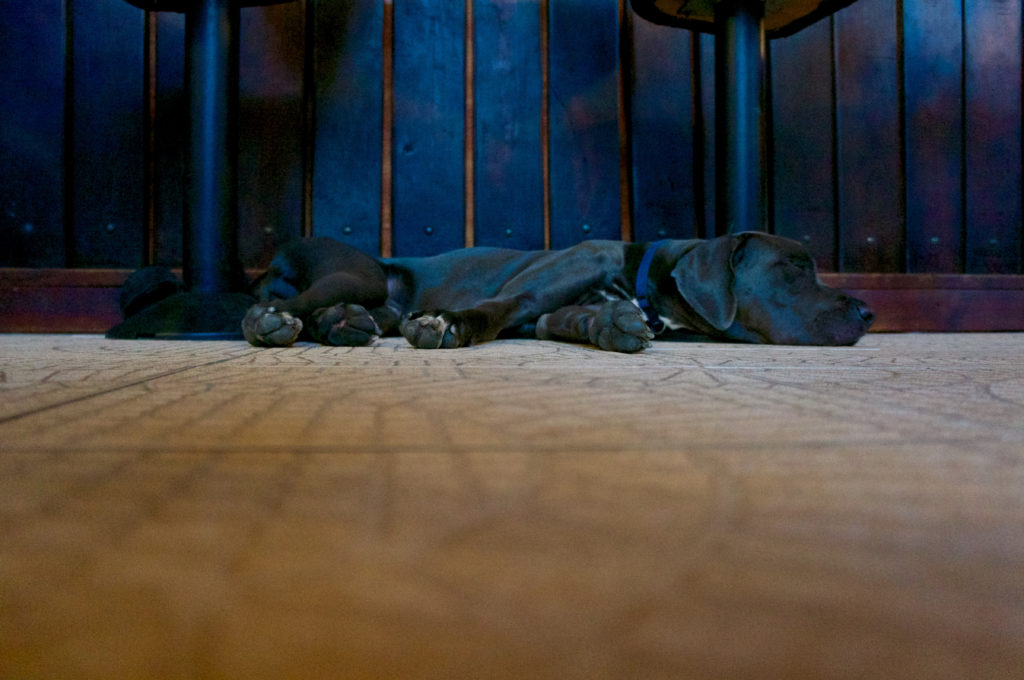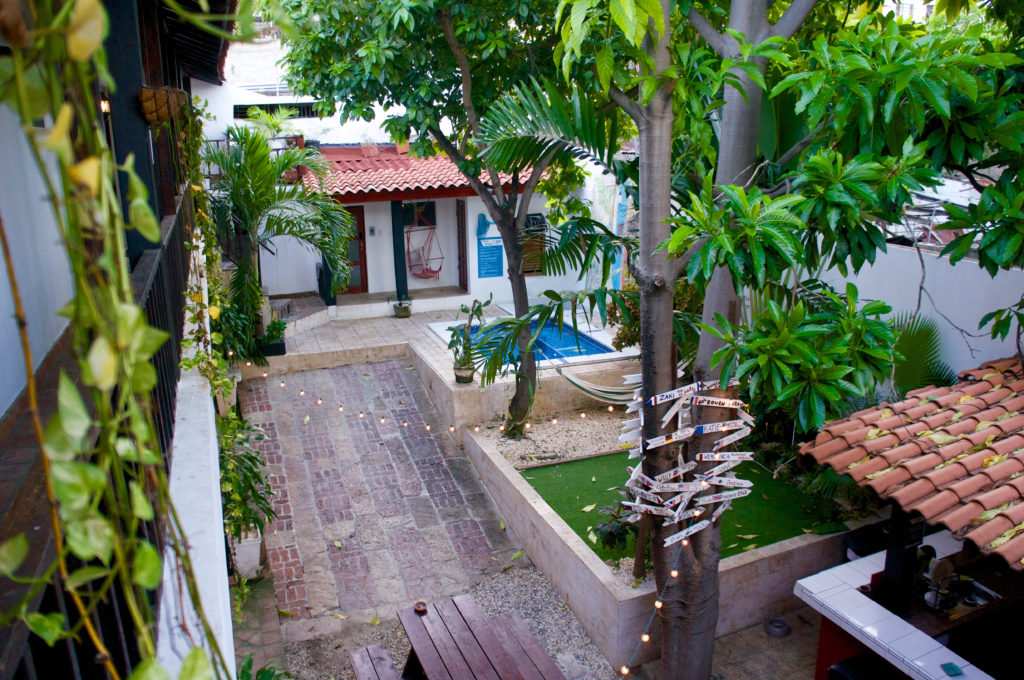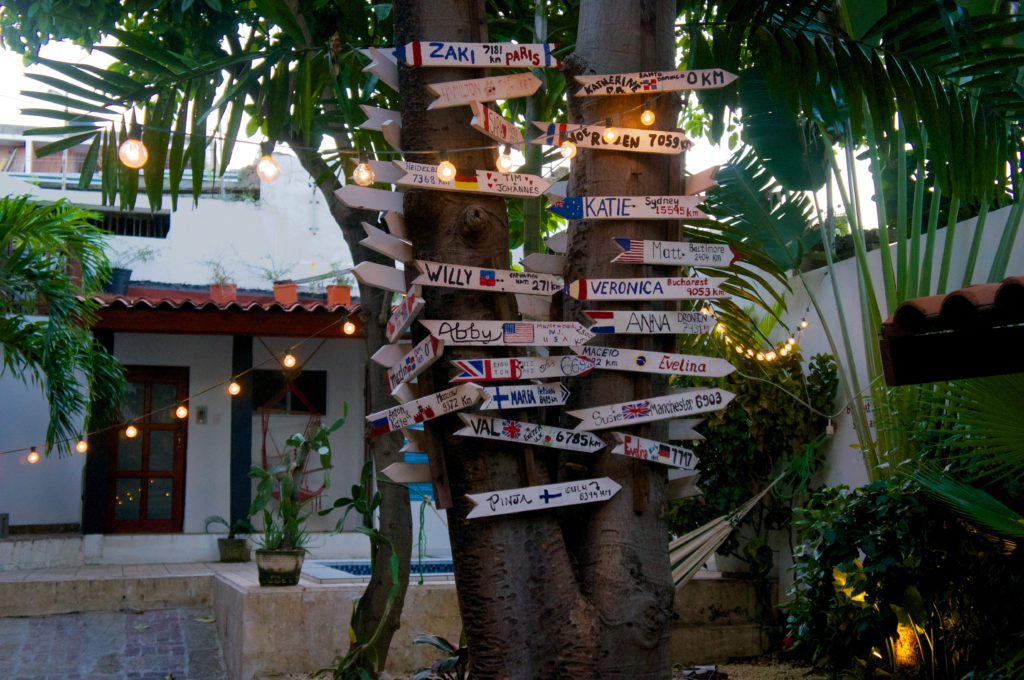I’m a sucker for the written word. At age ten, I went to summer sleep-away camp and quickly became noted (mocked) for reading books, newspapers, magazines and cereal boxes while other kids were out playing. The reading habit has stuck with me throughout my travels. I’ve posted photo essays about signs in Chefchaouen (Morocco), Hong Kong, Nicaragua, and Fes (Morocco). I’ve also documented graffiti around the world.
So on my recent trip to Santo Domingo, I took pictures in the Zona Colonial of the written word.
Christianity is abundantly represented in Santo Domingo, from the city’s very name to the names of the streets to the abundance of 500 year old churches that dot the Zona Colonial. There are religious references in many of the city’s signs. But I was more interested in the informal religious signs, like this one that says, simply, “Believe in God.” And I was amused that next to this profound message was a sticker from the Geto Boys’ album “We Can’t Be Stopped.”
A more complex message is delivered by this one that says “If God does not assume it, the people will assume it.” The “it” in this case is presumably responsibility — or power.
Surprisingly, not all the religious signs I saw were Christian, such as this building with a Buddhist symbol (and a translation conveniently scrawled above it) .
Other messages were more political. This one articulates one of my own deepest convictions: “If you are neutral in situations of injustice, you have chosen the side of the oppressor.”
And this one, which is a quote from Juan Pablo Duarte (1813 – 1876), of the founding fathers of the Dominican Republic: “It has never been more necessary than today to have health, heart, and judgment. Today men without judgment and without heart conspire against the health of the country.” Appropriately enough, it was painted on a wall outside a health clinic. It sounds remarkably like some of the rhetoric that we hear in America today over healthcare policy.
I was pleased to see this sign on a second-floor balcony near where I was staying. The rainbow flag needs no translation; the caption on it reads “Normalizacion LGBTI Dominicana.”
This plaque above an old building on the Conde, Santo Domingo’s walking street, commemorates “intellectuals and artists” who were exiled from Spain. I don’t think I’ve ever seen a plaque anywhere in America honoring “intellectuals” as a class. It’s nice to see that in some parts of the world, the term is not a dirty word.
I was also glad to see that honest-to-goodness real newspapers and newspaper vendors still exist in the Dominican Republic. Their headlines are just as dramatic as those of US tabloids. The middle paper’s headline blares, “Shocking Murder of Three Teenagers.” The tabloid on the left is (naturally) a communist paper, whose headline says, “Corruption and Impunity Are Inherent in Capitalism.” And the right-hand paper luridly announces, “Cruelty! Emily Perguero Was Beaten on the Head Until Her Skull Caved In and her Uterus Was Pierced to Induce an Abortion.”
In a residential area, I saw this sign marking the headquarters of the Board of Neighbors of St. Nicholas de Bari.
Nearby was a nice-looking little restaurant that, unfortunately, was closed each time I passed it.
Back at the pool at Island Life Backpackers Hostel, these signs conveyed perfectly the very British sensibilities of its proprietor.
